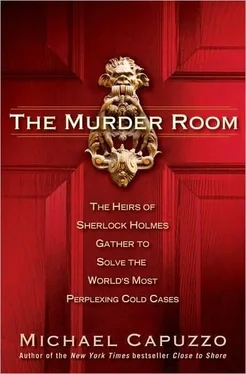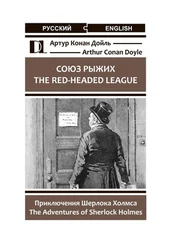“I quite like it,” Walter said. “A little overdramatic, perhaps. But perps haven’t changed much, nor their just deserts.”
Stoud saw the photographs of the boy covering the trestle table. His studied the old police photos from 1957. Walter pointed to the cuts and bruises all over the body. He saw evidence of burning, cutting, spanking, and ligature marks. There were signs of starvation and dehydration. The anus had been sodomized, evidently with all manner of instruments. One hand and one foot were severely withered, a process caused by overexposure to water.
The burn scars on the torso showed perhaps where cigarettes had been put out. There was evidence needles had been inserted here and there. The narrow head squeezed in on the sides by some terrible pressure, probably a vise.
As soon as he saw the photographs, Walter realized that the police, led by the late Remington Bristow, had built much of four decades of investigation on the wrong premise. Bristow’s sentimental attachment to the idea the boy had been accidentally killed by loving parents was absurd.
“It’s sadism,” Walter said. “Now we see that what Mary told Kelly and McGillen in Cincinnati makes perfect sense.” Mary’s mother had an ideal setup to enjoy her exploitation of the boy, he said. The irony of being a respected librarian, working with schoolchildren on the prestigious Main Line of Philadelphia, would have excited her. It was the 1950s, when the world of suburban mothers and children was portrayed by June Cleaver standing in the kitchen in her apron saying with a frown, “I’m worried about the Beave.” And the Beaver saying, “Gee, Wally, that’s swell!”
The boy’s secluded basement prison was a perfect cover for her. Emotionally drained after her attacks, she could clean herself of blood or hair, lock the boy back down in his box, and reassume her roles in society. Neighbor. Friend. Librarian. Wife. Mother. She’d become more rigid, sadism would change her personality, but she’d handle it far below the radar, a few more Bloody Marys with her husband, a few more appearances at church.
She would have thrilled with the sense of power of dominating her secret, far different world.
“She didn’t need to cover up in front of her husband or daughter; they were thoroughly terrified of her, totally submissive,” Walter said. “Guilt was nonexistent. She was comfortable with the facts-this is who I am. While everyone else is searching for who they are, she knows the truth.”
The torture would have proceeded slowly and escalated over the months and years. “The fancy term for the cuts and bruises we see is polymorphic perverse-all over the body, equidistant, no one particular preference. Keep in mind this boy’s penis is not going to give this woman any satisfaction, what’s going to give her satisfaction, in this heaviest and most complicated of subtypes, is in the process of killing. So therefore one administers torture in a systematic way that then gets them off. Each time she’s injuring him she’s fantasizing the ultimate death, but she’s trying to maximize the experience of emasculation over time.”
She probably read to him. Hansel and Gretel would have given her pleasure. The fairy tale, stale and locked in a children’s book in the library, was one she brought to life in her own house.
“Get up, you lazy bones, fetch water and cook something for your brother,” the witch cried. “When he’s fat I’ll eat him up.”
Gretel cried and cried for she could do nothing to save Hansel.
The appeal of Jonathan was to snuff out a man when he was just developing. Destroying him will be the ultimate sexual pleasure, but she prolongs it by slowly degrading him. “She has him dependent, fearful, degraded, she’s created an image of him and now she’s trying to destroy the image, and he just becomes a prop. Everything that went wrong in her own life, she had a wonderful whipping boy.”
The narrow misshapen head indicates “she did a lot of head pressure, squeezing his head real tight with hands or implements or a vise, keeping him immobile in a head harness. She probably had a fair amount of bondage, tying up, whipping him, taking him out of the box, someplace where he was unseen. She had sex with him. She’s getting off as she’s doing this.”
She despises him for his innocence, youth, and his failure. “He’s likely retarded, has surgical scars from his first year of life so he’s damaged goods. He was told by his parents, he’s trash, a throw-away child. She knew what she wanted. She knew she needed a sex toy, and instead of choosing a dildo or a plastic doll, which they didn’t have then, she could have a real live one and it didn’t make any difference. Now you see how they view other people. Other people simply don’t exist.”
When the nightmarish headlines begin about the Boy in the Box, she follows it closely, getting high from it. At the library and in church she says, “Isn’t it terrible about that boy?” Her power feels ever more expansive; she is aggressing not only against the boy but the police department, the entire community of Philadelphia, and the Main Line especially.
By the time of the boy’s death, Mary’s mother had moved deep into the Helix and was on the high cusp of bondage and discipline. “He’s bonded in the basement, chained down, secured in that box.” Advancement down the scale is unpredictable; it can take weeks, years, or mere hours. The puncture scars on Jonathan’s body indicate that the next phase was starting-picquerism-when suddenly on an afternoon in 1957 the mother became a murderer. It was clear to Walter that the mother, having teased out her pleasure over years and then suddenly discovered the exhilarating rush of killing, “would have chosen another victim in short order, and dispatched him much more quickly.”
The Main Line librarian, he believes, was a serial killer in the making.
The hatred of innocence continued unabated, of that there is powerful evidence. Shortly before her death, the aging mother asked her daughter, now a young woman, if she could share her bed sexually one more time. The daughter refused, engendering rage from the old woman.
“So the mother was the perfect killer,” Walter said. “There’s only one problem with this scenario.” He took a long draw on a Kool.
“She didn’t do it.”
He smiled coolly in the gloom of the parlor.
“But I know who did.”
CHAPTER 54. DEATH IN THE TIME OF BANANAS
Late one Sunday night, the week before Christmas 2004, Walter was drinking wine and watching ultimate fighting on cable when he received a call from the police department in Hudson, Wisconsin (population 8,775), a small town on the St. Croix River west of Minneapolis-St. Paul. Was it too late to call? The officer sounded nervous.
“Not to worry,” Walter said.
“Erickson is dead.”
“You’re kidding me.”
“They found him at the church.”
Walter listened quietly. He had visited Hudson two weeks ago to consult with the police on the biggest cold case in the small town’s history-the double murder at the O’Connell Funeral Home nearly three years earlier.
On February 5, 2002, funeral director Dan O’Connell, thirty-nine, one of the town’s leading citizens, and his assistant, college intern James Ellison, twenty-two, were found shot to death in the funeral home in broad daylight. The police were astounded. It was as unthinkable as a spaceship landing in the river and little green men swimming ashore. In Hudson, folks only saw such things on TV, or read about them in the city newspaper.
The victims were respected people with no known enemies who hadn’t engaged in any risky behavior, such as drug dealing, that could have set them up for murder. O’Connell was one of Hudson ’s most prominent businessmen, a leader of the Catholic Church, a paramedic, and active in the Rotary Club, the Boy Scouts, and YMCA fund-raisers. He had been named King of the North Hudson Pepper Fest. Ellison was an upstanding young man with few local ties. There was no robbery, no motive for the double murder in the quiet small town.
Читать дальше












